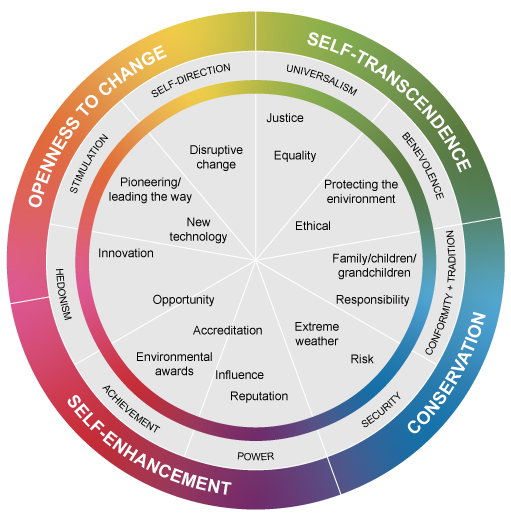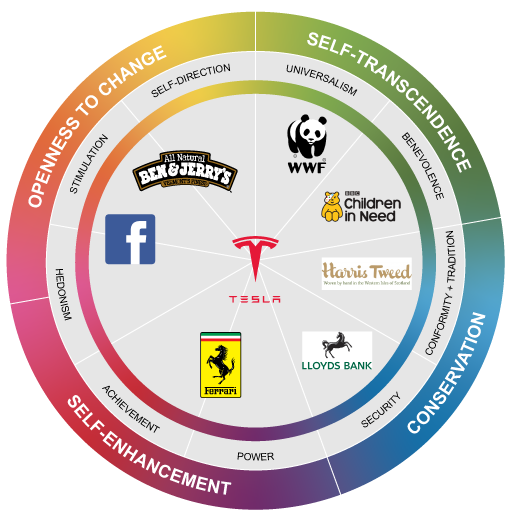4.1 Combining values and language
The next activity builds on the Schwartz Theory of Basic Human Values, which we introduced in Session 3 (Activity 3.2 [Tip: hold Ctrl and click a link to open it in a new tab. (Hide tip)] ). It asks you to think about the way you communicate with business owners and managers, and how to use the most appropriate language for organisations and individuals with different sets of values.
Activity 4.2: Using the right language
Have a look at the words above and below the diagram. Each word relates to environmental sustainability and is likely to resonate with individuals and businesses who hold different values. Drag and drop each word onto the diagram, where you think they might fit best. Once you have completed this activity, you can compare your results with our researchers’ version.
Part two of this activity asks you to drag and drop a number of brand logos onto the Theory of Basic Human Values diagram. There are no ‘correct’ answers here, but it helps to remind us that some businesses present strong values as part of their brand image.
Comment
Here are our attempts at the two exercises – how do they compare with your versions?


Did you find it easy to choose where to put these brands? In some cases brand-values are very clear, whereas other companies can speak to different sets of values depending on context and audience. Tesla, for example, has clear ambitions for achieving a low-carbon transportation system, but at the same time its luxury cars might also be symbols of achievement and power for their customers.
4 A values-based approach to engagement (2/2): practice
